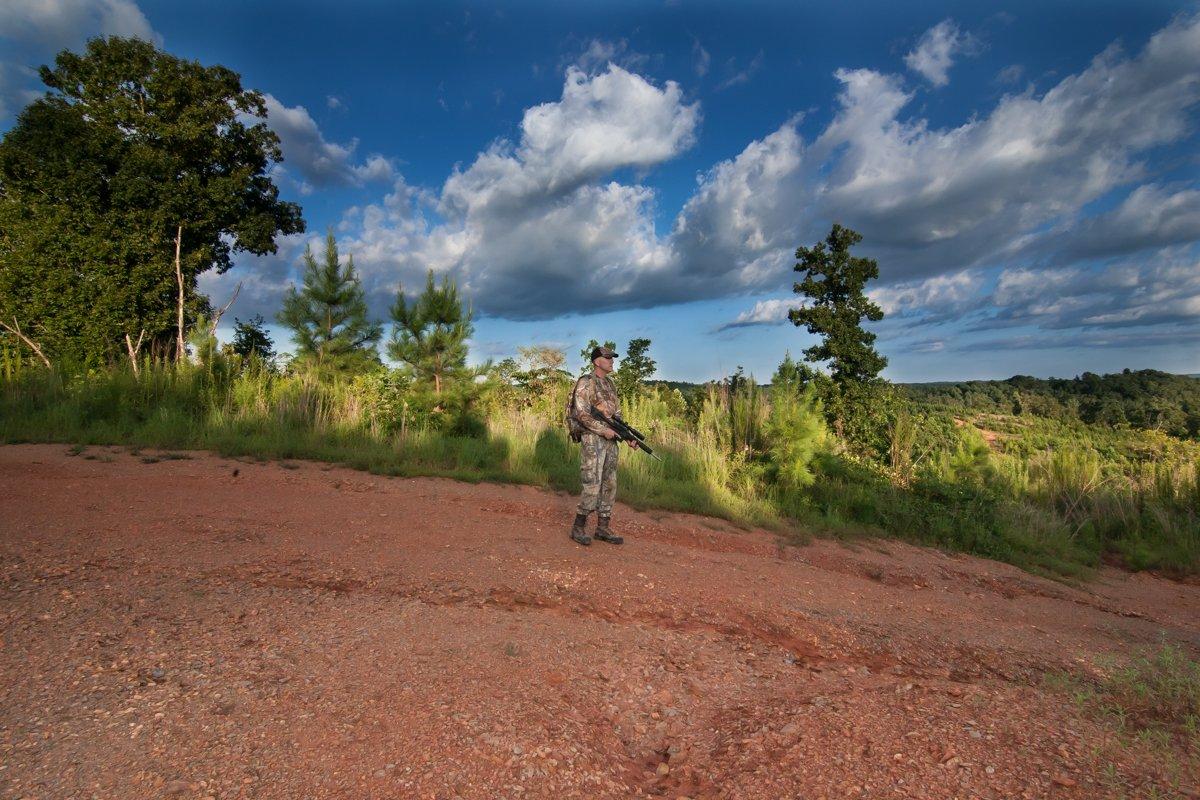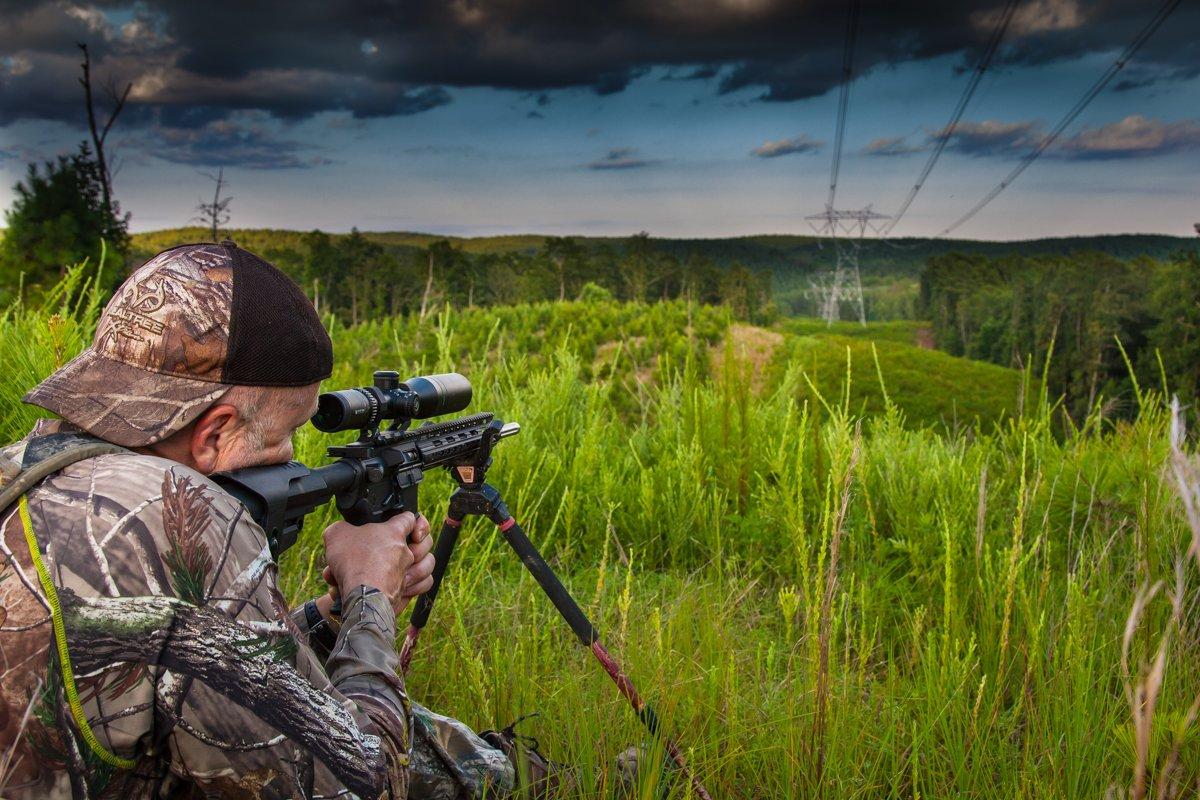Have You Tried These Tips While Coyote Hunting?
Most of us have watched the open-country coyote hunts filmed in the vast mesas and prairies of the West. We've seen coyotes coming in on the run from hundreds of yards away, then pausing for that perfect shot. It is a remarkable sight, a long-distance visual of your quarry approaching and reacting to the call.
Here on the East Coast, however, we lack the vistas and miles of visibility. Heavy cover and thick foliage silence the hunter's calls, limiting their effective range. The coyotes are wary in these tight quarters and often slip away unnoticed by their pursuers.
To score in the East, hunters must change their perception of how coyotes are typically hunted and adapt to the eastern theater. Here are a few scenarios that hunters will encounter and ways to adjust tactics in order to score on coyotes East of the Mississippi.
Logging Roads
Logging roads and closed forest service roads are travel highways for coyotes on the prowl. Thousands of miles of these roads litter the region, so scouting to find a prime location can take time. Tracks in wet or dusty roads only mean a coyote has traveled that road at some point. What you want to look for are signs of repeated use, scat, and multiple sets of tracks so you know the area is a preferred hunting or travel route.
I like to set up near a bend in the road with the wind crossing the road opposite of the bend or directly downwind. This offers two advantages. The first being coyotes will approach downwind, walking in the road and sneaking down the edge, slinking inside cover before popping out into the open. Setting up near a bend will force them to round the bend in a dead downwind scenario or cross the road with a quartering wind, allowing the caller to stop them with a few squeaks from a mouth or hand call. The second advantage is safety. This is a road and people, like animals, often choose the path of least resistance. When the shot comes, I do not want the bullet traveling down a long length of road.
Calling at this type of setup can vary from birds, rabbits, or whitetail fawns in distress depending on the time of year. For most of the year, I like to start out with a bird in distress in conjunction with a decoy like a FoxPro Foxjack to give an approaching coyote something to look at. Rabbit or raccoon in distress works well, too. During the summer months, once does begin giving birth, I switch things up to a fawn in distress and use a full-body whitetail fawn decoy placed just off the road. When the weather is hot, coyotes may not want to break cover. The temptation of a big meal will usually get them to commit. Give each setup at least 30 minutes or so before moving to another site.
Thick Cover
Rodents and small mammals love briar patches, laurel thickets, and overgrown clearcuts. Deer also use this heavy cover as bedding and travel corridors, blazing trails that other animals, like coyotes, will use. The problem with hunting thick cover is you can lay down a lot of scent if you're not careful and it's very difficult to see approaching coyotes at ground level in time to get a shot off. Hence, hunting from an elevated position such as a treestand is preferred.
Hunting from a stand and keeping your scent to a minimum will allow a coyote to get very close when things come together. Since the shots are close and probably at a moving target, it's a wise move to trade the flat-shooting rifle in for a 12 gauge. At 50 yards and under, which is around the maximum sight distance for most of these situations, a 12 gauge loaded with No. 2 Hevi-Shot or even No. 4 magnum turkey loads are more than adequate to dispatch your target.
To lure in coyotes in cover, use rodent squeaks and maybe a baby cottontail in distress. Keep calling on the quiet side and use lighter calls like vole and mouse squeaks, or a baby cottontail in distress. Start your calling sequence with some very quiet calls around 1 minute in duration, then wait 5 minutes. If nothing shows up, turn up the volume just a bit and lengthen the sequence to 3 to 5 minutes at the most, then wait around 15 minutes and repeat. I like to give thick-cover stands at least 40 minutes before throwing in the towel, but will sometimes wait over an hour if I know coyotes are moving through the area.
Powerline Right of Ways
Powerlines, especially those that are not mowed on a regular basis, make for prime coyote stands. When the briars and pine saplings begin to take over a powerline right of way, they become a haven for rodents, rabbits, deer, and just about everything else a coyote eats. Another benefit of hunting powerlines are the maintenance roads that run the length of these openings. Given these rights of ways span miles across varying terrain, it gives the hunter the ability to find high ground and survey a large area.
Since coyotes like to travel roads and these particular roads run parallel to heavy cover, powerline stands have been some of my most productive. During mating season, I like to set up on a high spot and begin my sequence with a few searching howls. If nothing responds or shows in the first 10 minutes or so, I like to use various calls such as simulating a dog brawl, content female howls, and end the stand with a challenge howl. Since the sound will carry through the open country better than the woods, I'll give each stand around 45 minutes to an hour.
If it is not breeding season, I use wounded bird calls, rabbit in distress, or something of that ilk. Coyotes will prowl these powerlines at dawn and dusk looking for an easy meal, so I like to travel the maintenance roads and make multiple stands during a hunt. Changing up the calls and calling sequences are advisable, especially if you know coyotes are in the area, but are not getting any action. Remember, this is the East and oftentimes less is more in terms of volume and duration of calling sequences.
Freshly Cut Hayfields
Hayfields harbor mice and rabbits along with other rodents. When these fields are cut, coyotes will descend upon them, their prey exposed and easy pickings in the freshly shorn grass. This type of hunting is best the day after the cut and up to as much as a week after depending on the size of field and the numbers of coyotes in the area.
Hayfields and crop stands are the closest thing you can find in the East that mimic open western expanses. For these stands, I like to find a ditch or an overgrown fencerow that offers cover. I set up an e-caller depending on wind direction, but prefer to have it in the field with some type of decoy like the Foxjack or even a feather tied to an arrow shaft with a light piece of monofilament line. Anything that offers movement to catch a predator's eye is desirable in these open areas.
East Coast coyotes prefer to not cross open expanses, sticking to the edge of cover on their approach, so don't expect a coyote to come charging in across the open field. While this does happen on occasion, they will usually stick to running fencerows or the edge of cover until they can reach the downwind side of the call/decoy.
Coyotes in the East are said by some to be the most difficult to call and kill. The close proximity of the encounter coupled by decreased effective range of the call and a customarily warmer climate make for challenging hunts.
Persistence, dedication, and experimenting with different calls and setups will put fur on the ground for the tenacious hunter.
Realtree predator hunting. Realtree Facebook.








